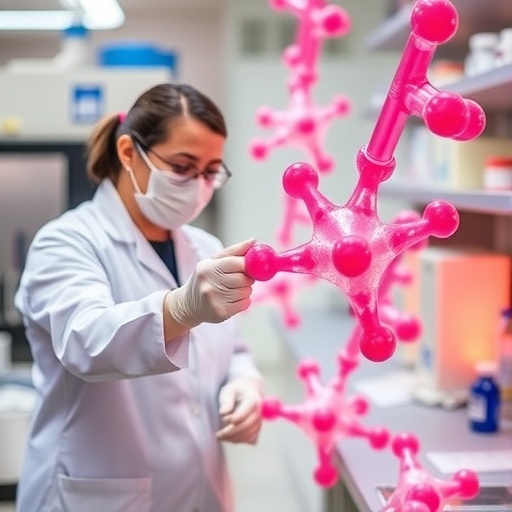Credit: César Hernández/Ainhoa Goñi
A research scientist at the Spanish National Research Council (CSIC), Federica Bertocchini, has discovered that wax worms (Galleria mellonella), which usually feed on honey and wax from the honeycombs of bees, are capable of degrading plastic. This worm is capable of biodegrading polyethylene, one of the toughest plastic materials that exists, and which is used to make shopping bags and food packaging, amongst other things. The discovery has been patented by the research scientists. The CSIC scientist worked on this research with Paolo Bombelli and Chris Howe from the University of Cambridge. The paper will be published in the next issue of Current Biology.
Every year, around 80 million tonnes of polyethylene, a material which is extremely tough and difficult to degrade, are produced around the world. For example, low-density polyethylene plastic bags, take around 100 years to decompose completely, with the toughest, most resistant ones taking up to 400 years to break down. Every year, the average person uses more than 230 plastic bags, generating more than 100,000 tons of this type of plastic waste.
Currently, the very long processes of chemical degradation, which require the use of corrosive liquids such as nitric acid can take up to several months. This is the first time that a scientific research team has found a natural solution which has proven itself capable of degrading this material. "Plastic is a global problem. Nowadays waste can be found everywhere, including in rivers and oceans. Polyethylene in particular is very resistant, and as such is very difficult to degrade naturally", says the CSIC researcher who works at the Institute of Biomedicine and Biotechnology of Cantabria, situated in Santander, on Spain's northern coast.
"We have carried out many experiments to test the efficacy of these worms in biodegrading polyethylene. 100 wax worms are capable of biodegrading 92 milligrams of polyethylene in 12 hours, which really is very fast", says Bertocchini. Following the larva phase, the worm wraps itself in a whitish-coloured cocoon or chrysalis. The researchers also discovered that by simply having the cocoon in contact with polyethylene, the plastic biodegrades.
The composition of beeswax is similar to that of polyethylene. According to the researchers, this may be the reason why the worm has developed a mechanism to dispose of this type of plastic. "We still don't know the details of how this biodegradation occurs, but there is a possibility that an enzyme is responsible. The next step is to detect, isolate, and produce this enzyme in vitro on an industrial scale. In this way, we can begin to successfully eliminate this highly resistant material", explains Bertocchini.
A chance discovery
The scientist, who is also an amateur beekeeper, discovered this attribute of wax worms quite by chance. One day she discovered that the honeycomb panels stored in her house were covered with worms which were feeding on the leftover honey and wax from her bees.
"I removed the worms, and put them in a plastic bag while I cleaned the panels. After finishing, I went back to the room where I had left the worms and I found that they were everywhere. They had escaped from the bag even though it had been closed and when I checked, I saw that the bag was full of holes. There was only one explanation: the worms had made the holes and had escaped. This project began there and then", says the CSIC scientist.
The wax worm
The wax worm, also known as the honey worm, is a lepidopteran insect which can reach three centimeters in length in its larval phase and can be found anywhere in the world. They feed on honey and wax in beehives, where they also find a suitable temperature for their development.
Wax worm larvae have a life expectancy of between six and seven weeks at an optimal temperature for growth of 28 to 34 degrees Celsius. The larvae produce silk and make a cocoon in which they will go through their last metamorphosis: their conversion into moths.
###
Media Contact
Ainhoa Goñi
[email protected]
34-915-681-473
@CSIC
http://www.csic.es
############
Story Source: Materials provided by Scienmag




